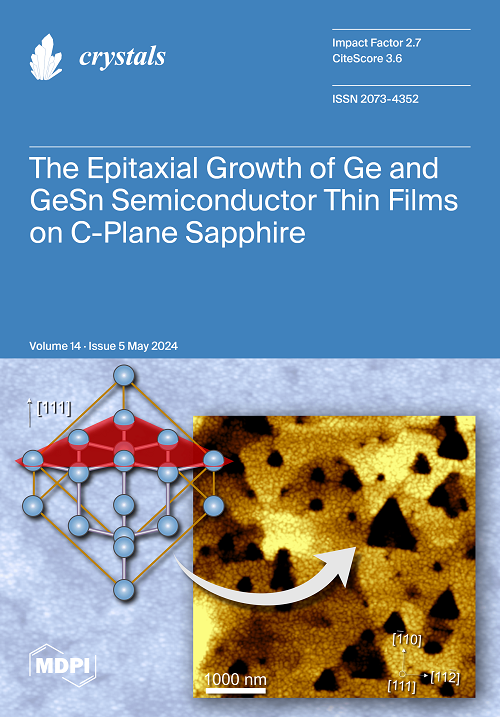The Effects of Laser Parameters on the Wear Resistance of a Cu/BN Remelted Layer
IF 2.4
4区 材料科学
Q2 CRYSTALLOGRAPHY
引用次数: 0
Abstract
In order to improve the wear resistance of copper and enhance the surface properties of copper parts, this article uses BN nanoparticles as a reinforcing phase and the laser remelting method to prepare a Cu/BN remelted layer on the copper surface. The surface morphology, crystal structure, microhardness, and wear resistance of the samples were tested and characterized using scanning electron microscopy (SEM), X-ray diffraction (XRD), a microhardness tester, and a friction and wear tester. The effects of laser frequency, pulse width, and energy density on the surface morphology and wear resistance of the samples were analyzed and studied, and the effects of the laser parameters on the properties of the Cu/BN remelted layer were discussed. The research results indicate that laser frequency, pulse width, and energy density have a direct impact on the surface morphology and properties of the Cu/BN remelted layer, but the impact mechanism by the above parameters on the remelted layer is different. The effects of laser frequency on the remelted layer are caused by changes in the overlap mode of the remelting points, while laser pulse width and energy density are achieved through changes in remelting intensity. When the laser frequency is 10 Hz, the pulse width is 10 ms, and the energy density is 165.8 J/mm2, the Cu/BN remelted layer has better surface properties.激光参数对铜/氮化硼重熔层耐磨性的影响
为了提高铜的耐磨性并增强铜零件的表面性能,本文采用 BN 纳米粒子作为增强相,并利用激光重熔法在铜表面制备了 Cu/BN 重熔层。使用扫描电子显微镜(SEM)、X 射线衍射(XRD)、显微硬度计和摩擦磨损试验机对样品的表面形貌、晶体结构、显微硬度和耐磨性进行了测试和表征。分析和研究了激光频率、脉冲宽度和能量密度对样品表面形貌和耐磨性的影响,并讨论了激光参数对 Cu/BN 重熔层性能的影响。研究结果表明,激光频率、脉宽和能量密度对 Cu/BN 重熔层的表面形貌和性能有直接影响,但上述参数对重熔层的影响机理不同。激光频率对重熔层的影响是由重熔点重叠模式的变化引起的,而激光脉冲宽度和能量密度则是通过重熔强度的变化来实现的。当激光频率为 10 Hz、脉冲宽度为 10 ms、能量密度为 165.8 J/mm2 时,Cu/BN 重熔层的表面性能更好。
本文章由计算机程序翻译,如有差异,请以英文原文为准。
求助全文
约1分钟内获得全文
求助全文
来源期刊

Crystals
CRYSTALLOGRAPHYMATERIALS SCIENCE, MULTIDIS-MATERIALS SCIENCE, MULTIDISCIPLINARY
CiteScore
4.20
自引率
11.10%
发文量
1527
审稿时长
16.12 days
期刊介绍:
Crystals (ISSN 2073-4352) is an open access journal that covers all aspects of crystalline material research. Crystals can act as a reference, and as a publication resource, to the community. It publishes reviews, regular research articles, and short communications. Our aim is to encourage scientists to publish their experimental and theoretical results in as much detail as possible. Therefore, there is no restriction on article length. Full experimental details must be provided to enable the results to be reproduced. Crystals provides a forum for the advancement of our understanding of the nucleation, growth, processing, and characterization of crystalline materials. Their mechanical, chemical, electronic, magnetic, and optical properties, and their diverse applications, are all considered to be of importance.
 求助内容:
求助内容: 应助结果提醒方式:
应助结果提醒方式:


